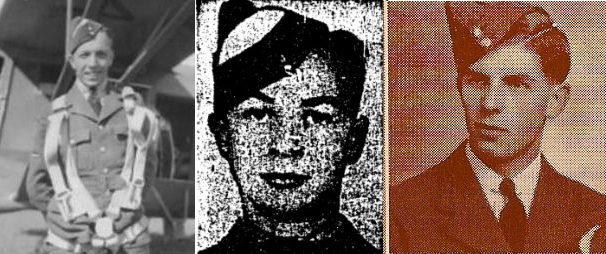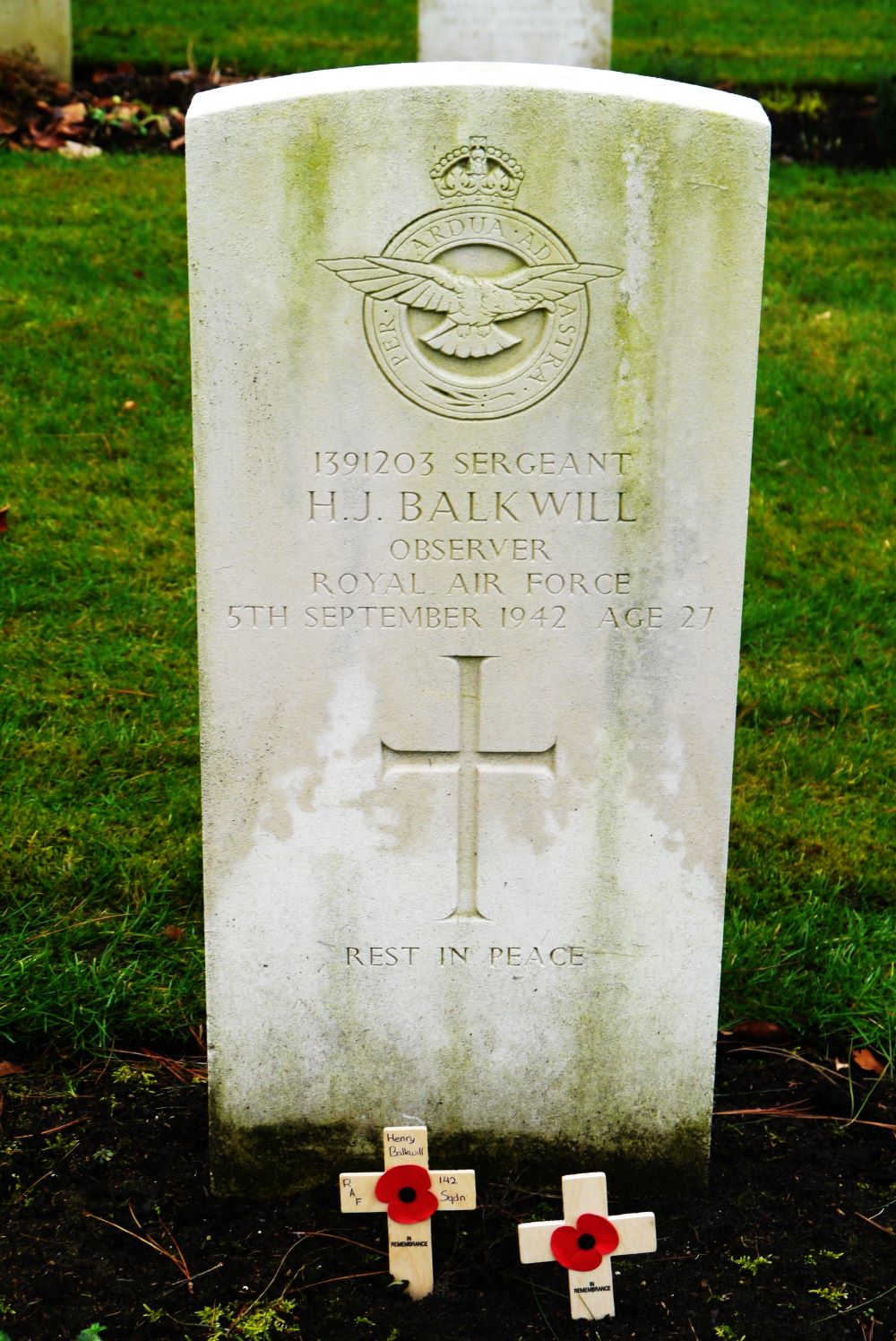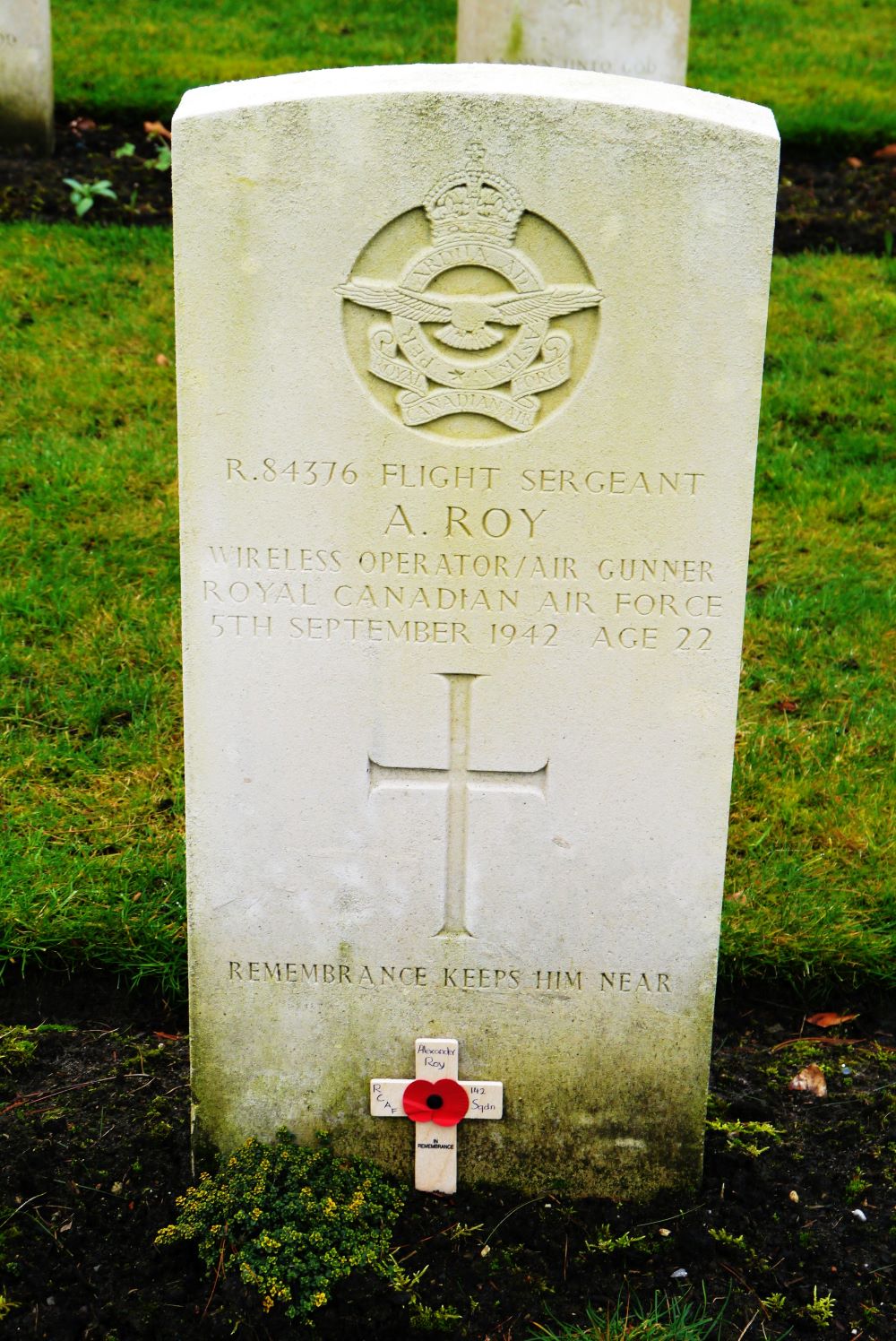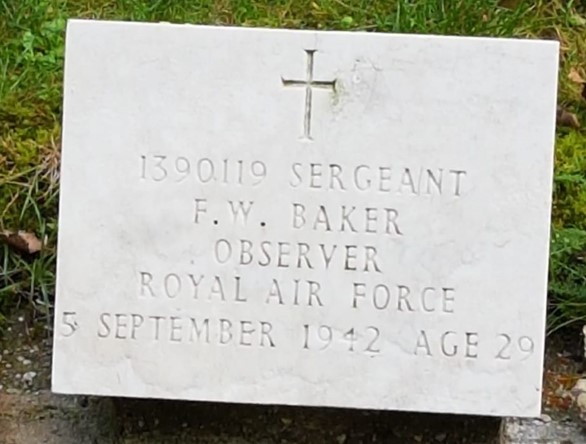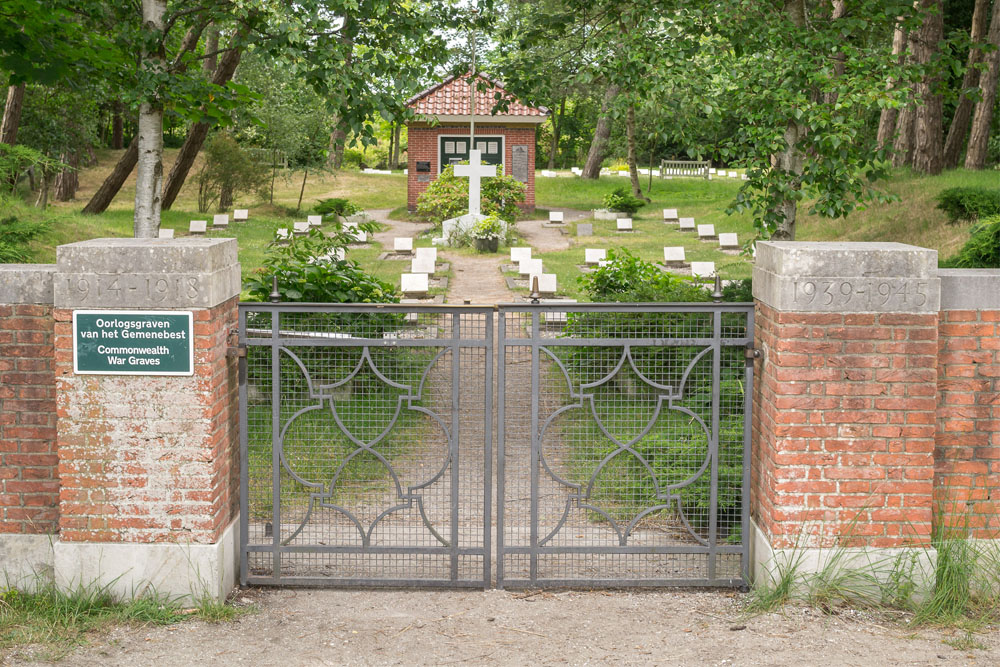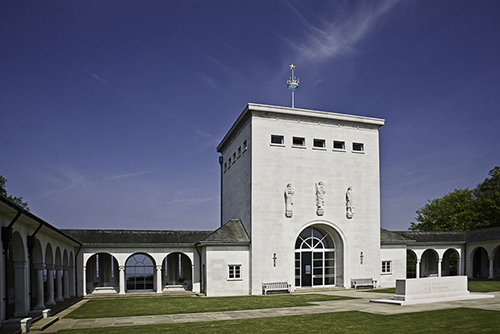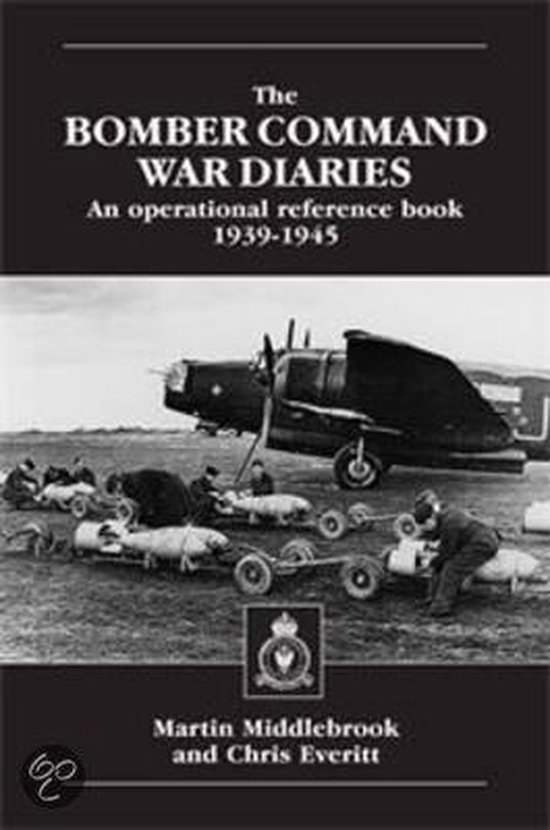Crash of Wellington Z1214 near Vlieland
Introduction
The Runnymede Memorial at Englefield Green – overlooking the River Thames – commemorates by name more than 20.000 Commonwealth airmen who were lost in World War Two during operations from bases in Northern and Western Europe, and who have no known graves. Their names are engraved into the stone walls of the memorial, according to country, year of death and rank. Most of these airmen where lost without trace over sea. Such was the fate of two members of the crew of Wellington Z1214. This aircraft from No.142 Squadron was lost on the night of 4/5 September 1942 when it was shot down north of the island of Vlieland. Three of the five airmen who flew the Wellington washed ashore and were buried in Dutch cemeteries, but the pilot and the rear gunner are presumed lost at sea.
Target Bremen
RAF Bomber Command tried to inflict damage on the German war machine from the air . At first, by means of strategic bombardments on industrial and military targets. But when Air Marshall Sir Arthur Harris was appointed as its new commander in the spring of 1942, ‘area bombing’ became the new strategy. Harris’ tactics entailed indiscriminate attacks on cities with industrial and military importance. During the summer of 1942 these tactics were still regarded as a temporary measure until the Command could develop new techniques to return to the strategy of precision-bombing. Bremen was chosen as target for the night of 4/5 September 1942. Bremen was a city of military and industrial importance with the shipyards of Vulkan, AG Weser and Atlas Werke, the Valentin submarine pens, oil refineries and the aircraft works of Focke-Wulf.
The bomber force sent to Bremen on the night of 4/5 September consisted of 251 aircraft of four different types (Lancasters, Halifaxes, Wellingtons and Stirlings). No.142 Squadron, based at RAF Grimsby, delivered nine Wellingtons for the attack. One of these aircraft was Wellington Z1214 (QT-C). The crew of this machine was as follows:
Pilot: Flight Sergeant Ian Craigie Lamont (20 years old, Canadian)
Observer: Sergeant Frederick Walter Baker (29 years old, British)
Air Bomber: Sergeant Henry John Balkwill (27 years old, British)
Wireless Operator/Air Gunner: Flight Sergeant Alexander Roy (22 years old, Canadian)
Air Gunner: Warrant Officer II Reginald Harley Culp (23 years old, Canadian)
Lamont, Roy and Culp were all Canadians (although Roy was Scottish by birth but his family emigrated to Canada when he was young) and were serving in the Royal Canadian Air Force. They were all from the same area near Hamilton, Ontario. Lamont and Culp had only lived some 2.5 miles apart from each other prior to joining the air force, while Roy had lived 15 miles away from his compatriots.
This crew (with the exception of Culp) was trained at No.26 Operational Training Unit (26 OTU) where they had ‘crewed up’ and had received the last part of their training between June and August 1942. They also had gained their first operational experience whilst at 26 OTU. Düsseldorf had been the target of their first bombing mission during the night of 31 July/1 August. The training units provided aircraft for this raid in an attempt to reach the 1000-aircraft figure again (the bombardment of Cologne had been the first ‘thousand bomber raid’). With an operational flight under their belts, the crew was posted to No.142 Squadron on 15 August. It was one of three crews being posted from 26 OTO to No.142 Squadron that day, with the Heath-crew being one of the others.
The original air gunner of the crew had been Sergeant John Goodman. He completed the crew on their first operation whilst at No.142 Squadron when they attacked Saarbrücken on the night of 1/2 September 1942. But the next night he was replaced by Sergeant Reginald Culp who had been posted to the squadron on 20 August 1942. Goodman was declared unavailable for flying duty for unknown reasons until January 1943 when he was posted to No.166 Squadron.
Fatal flight
The operation to Bremen on the night of 4/5 September was only the third mission for this crew. Three minutes before midnight Wellington Z1214 was the second aircraft of No.142 Squadron to take off. Lamont then set course for Bremen. Whether the crew reached their target is unclear as nothing was heard again of Z1214 after take-off. A couple of hours later Oberleutnant Lothar Linke of of Nachtjagdgeschwader 2 had taken off from Leeuwarden airfield to attack the bomber force. At 04:03hrs he claimed to have shot down a two-engined bomber some 6 miles north of the Dutch island of Vlieland. This must have been Wellington Z1214.
That same day the body of Sergeant Balkwill was recovered from the North Sea by the Kriegsmarine. He was buried in grave 155 in Den Helder (Huisduinen) Cemetery on 7 September. The body of Flight Sergeant Roy washed ashore at an unknown point of the coast of the province of North-Holland on 7 September. He was buried in grave 169 in Den Helder (Huisduinen) Cemetery on 9 September.
On the morning of 18 September a body was recovered on the western beaches of the island of Schiermonnikoog between poles 1 and 2 by soldiers of the Marine-Flak-Abteilung 216. The person was wearing a RAF uniform with the insignia of a sergeant and an observer wing. The body was identified as Sergeant Baker. The Germans had also recovered the body of an unknown airman. The two airmen were buried with military honours in adjacent graves in the Vredenhof cemetery the following day.
After the end of hostilities No.2 Missing Research and Enquiry Unit of the RAF investigated the fate of the two missing members of the crew. Two graves (grave 156 in Huisduinen cemetery - the grave next to Balkwill - and grave 86 in the Vredenhof cemetery on Schiermonnikoog) were opened as it was thought these might have a link with Lamont or Culp. However both examinations didn’t bring any results. Therefore Lamont and Culp are commemorated on the Runnymede Memorial.
The Commonwealth burials from Huisduinen cemetery were moved to Bergen op Zoom War Cemetery after the war. Balkwill and Roy were reburied here on 29 May 1947.
Extra information
If the reader of this article has further information on this bomber or its crew, then you are kindly requested to get in touch with the author by using the feedback form.
Definitielijst
- Abteilung
- Usually part of a Regiment and consisting of several companies. The smallest unit that could operate independently and maintain itself. In theory an Abteilung comprised 500-1,000 men.
- area bombing
- Aerial bombardment targeted indiscriminately at a large area. Prohibited since 1977 by the Geneva Convention. Also known as carpet bombing, obliteration bombing and moral bombing.
- Bomber Command
- RAF unit which controlled strategic and sometimes tactical bombing (as in Normandy)
- Commonwealth
- Intergovernmental organisation of independent states in the former British Empire. A bomber crew could include an English pilot, a Welsh navigator, air gunners from Australia or New Zealand. There were also non-commonwealth Poles and Czechs in Bomber Command.
- Flak
- Flieger-/Flugabwehrkanone. German anti-aircraft guns.
- Kriegsmarine
- Germa navy. Part of the Wehrmacht next to Heer and Luftwaffe.
- RAF
- Royal Air Force. British air force
- raid
- Fast military raid in enemy territory
- Squadron
- A military unit in the Belgian navy usually six to eight small ships operating together under one command. The smallest military unit in the Dutch air force of about 350 men. In most countries is the designation of a military unit thesize of a company. It is either an independent unit, such as a battery, or part of a bigger Calvary unit. In the air force it is the designation of a unit of aircrafts.
- strategy
- Art of warfare, the way in which war should be conducted in general.
Wellingtons of No.142 Squadron involved in the operation
An overview of the other Wellingtons of No.142 Squadron which were detailed for the operation to Bremen on the night of 4/5 September 1942.
Wellington Z1469 (QT-H)
Pilot: Squadron Leader James Frederick Henry Booth (age unknown, British)
Observer: Flight Sergeant Percy Henderson Stewart (29 years old, New Zealand)
Air Bomber: Flight Sergeant Arthur Alexander Purdom (age unknown, British)
Wireless Operator/Air Gunner: Sergeant Walter Gilroy (29 years old, British)
Air Gunner: Sergeant John Howarth (age unknown, British)
Wellington Z1318 (QT-K)
Pilot: Sergeant Tomas Augusta Julian (age unknown, Canadian)
Observer: Pilot Officer Arthur George Edwards (age unknown, British)
Air Bomber: Pilot Officer Robert Edwards Harvey (29 years old, British)
Wireless Operator/Air Gunner: Sergeant Allan Lewis Weller (25 years old, Canadian)
Air Gunner: Sergeant F. Salvage (age unknown, British)
Wellington Z1340 (QT-A)
Pilot: Pilot Officer John Gifford Stower (26 years old, British)
Observer: Sergeant Hilton Edwin Peake (33 years old, British)
Air Bomber: Sergeant Horace Edward John Wilkinson (25 years old, Canadian)
Wireless Operator/Air Gunner: Sergeant Joseph Bertram Glover (age unknown, British)
Air Gunner: Sergeant William Petrie Smart Rae (age unknown, British)
Wellington Z1420 (QT-F)
Pilot: Warrant Officer Alan Charles Bray (28 years old, New Zealand)
Observer: Sergeant John May (age unknown, British)
Air Bomber: Sergeant Edward William Banks (age unknown, British)
Wireless Operator/Air Gunner: Sergeant R. R. Delaroche (age unknown, Canadian)
Air Gunner: Sergeant Jack Celtic Southey (29 years old, Southern Rhodesian)
Wellington Z1221 (QT-Y)
Pilot: Sergeant John Patrick Kavanagh (20 years old, Canadian)
Observer: Sergeant F. S. Conway (age unknown, British)
Air Bomber: Sergeant D. Anderson (age unknown, British)
Wireless Operator/Air Gunner: Sergeant Frederick Albert Larsen (27 years old, Canadian)
Air Gunner: Sergeant William James North (19 years old, Canadian)
Sergeant William James North was killed by flak on this operation. He is buried in Norwich Cemetery.
Wellington Z1416 (QT-W)
Pilot: Pilot Officer Stanley McHugh (27 years old, British)
Observer: Sergeant Gilbert Cecil Hyde (21 years old, British)
Air Bomber: Sergeant Kenneth Harry Reddish (21 years old, British)
Wireless Operator/Air Gunner: Sergeant Kenneth Oswald Bower (21 years old, South African)
Air Gunner: Sergeant I. F. W. Young (age unknown, British)
Wellington Z1219 (QT-V)
Pilot: Pilot Officer Gavin Strang Smith (21 years old, British)
Observer: Sergeant William Jolliffe Whitewood (34 years old, British)
Air Bomber: Sergeant J. Edwards (age unknown, British)
Wireless Operator/Air Gunner: Sergeant Edward William Salmon (21 years old, Australian)
Air Gunner: Sergeant Louis Peter Marneweck (age unknown, British)
Wellington Z1414 (QT-O)
Pilot: Sergeant Leonard Hewitt (age unknown, British)
Observer: Sergeant William James Olde (25 years old, British)
Air Bomber: Sergeant Arthur Elliott (age unknown, British)
Wireless Operator/Air Gunner: Sergeant Ernest Joseph Pettitt (20 years old, British)
Air Gunner: Sergeant Ernest Alfred Giles (23 years old, British)
Definitielijst
- flak
- Flieger-/Flugabwehrkanone. German anti-aircraft guns.
- Squadron
- A military unit in the Belgian navy usually six to eight small ships operating together under one command. The smallest military unit in the Dutch air force of about 350 men. In most countries is the designation of a military unit thesize of a company. It is either an independent unit, such as a battery, or part of a bigger Calvary unit. In the air force it is the designation of a unit of aircrafts.
Information
- Article by:
- Pieter Schlebaum
- Published on:
- 07-11-2024
- Feedback?
- Send it!
Related sights
Related books
Sources
- CHORLEY, W.R., RAF Bomber Command Losses of the Second World War, 1942, Ian Allan Publishing, 1998.
- MIDDLEBROOK, M. & EVERITT, C., The Bomber Command War Diaries, Midland Publishing, 2011.
- Descendants of crew members
- Wyb-Jan Groendijk (researcher from Schiermonnikoog)
- Canadian Virtual War Memorial
- No.142 Squadron Operations Record Book
- No.26 Operational Training Unit Operations Record Book
